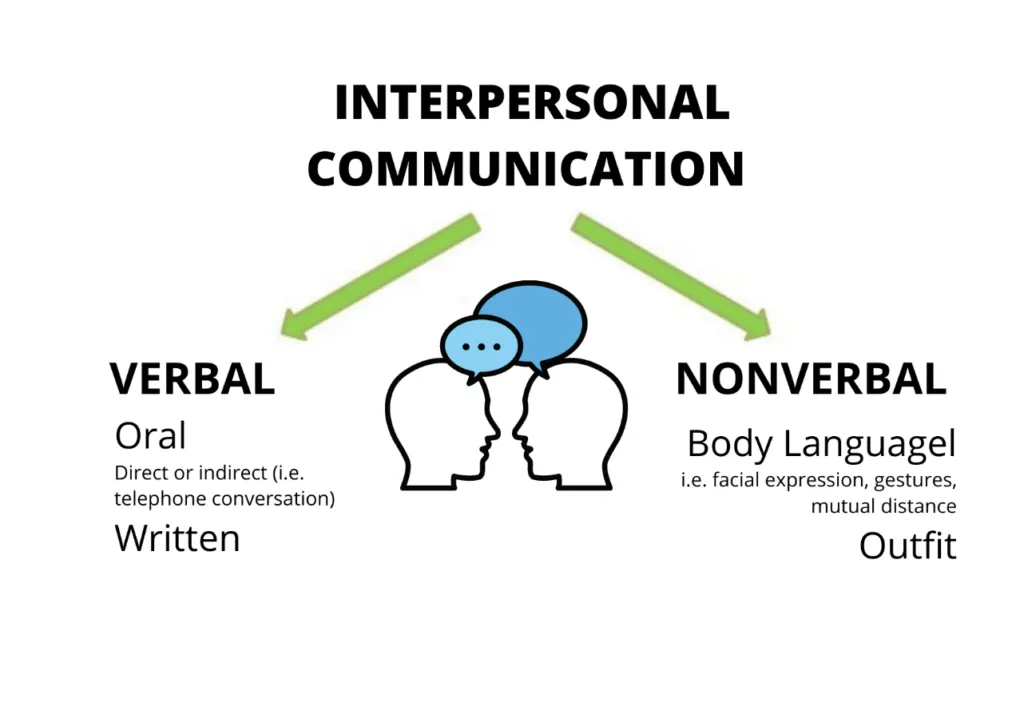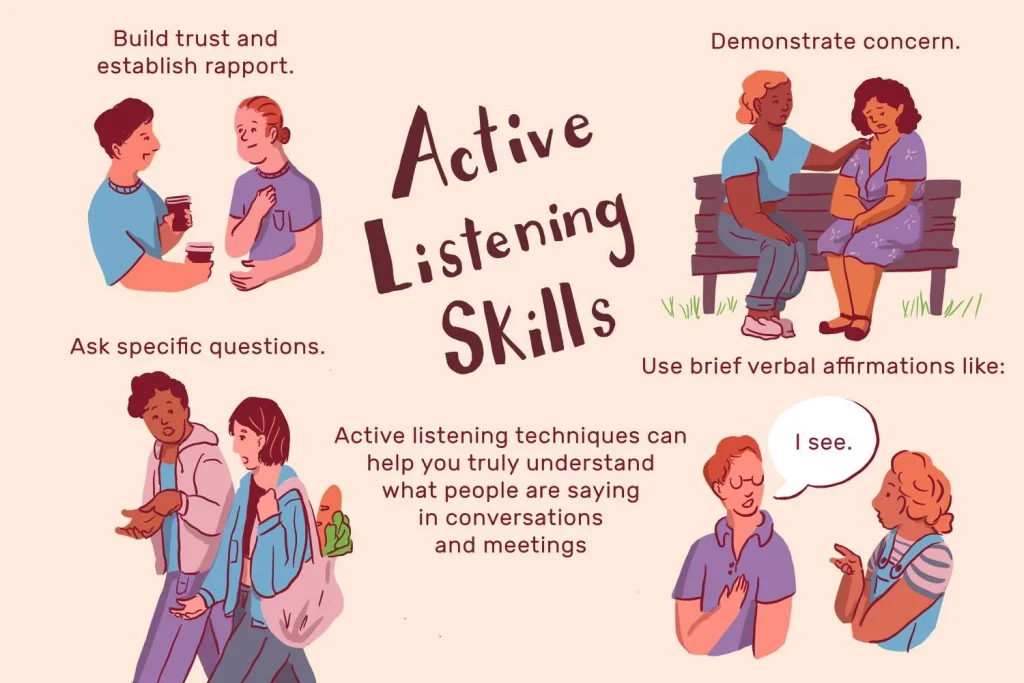Verbal communication is such an interactive process that helps one to relate well with people especially in social and work structural contexts. It allows communication of thoughts, ideas, and feelings through speaking or writing with an intention and helps in, informing people, persuading people, and making contacts with others.
Basically, this paper focuses on verbal communication, identifies its types, styles, significance in society and interaction, the basic skills necessary to achieve the interaction purpose, as well as goals regarding this interaction while providing remedies to some hindrances that would be in such communication.
What is Verbal Communication?
Verbal communication is that which is done through the word. It comprises of sounds or spoken and in addition, can be in writing, which makes it effective. It is in contrast to nonverbal communication in which body actions, facial expressions and other movements devoid of speech are employed.
It relies more on thought and speech in clear terms and ideas. Word Choice – Adequate selection of words that fit the situation and target audience upholds the correct comprehension of the message being conveyed.
Verbal vs. Nonverbal Communication
Complementary actions of verbal as well as nonverbal communication bring across a full message. As the verbal means of communication uses words to send a message or an idea, it is easy to see that. However nonverbal communication relies on other aspects of communication such as body language and tone of voice which make such a presentation more complete.
For instance, a sales lady may use a soothing tone in talking to a client but the actions may speak otherwise through body language such as crossed arms. However, knowing the right mix of the two is important so as to reduce instances of misunderstanding and enhance the communication that one is conveying.
Key Components of Verbal Communication
Many verbal communication skills have defining attributes that contribute to their effectiveness. Clarity is critical because it relates to the effective understanding of the message by the recipient. Tone serves an important function of conveying feeling and therefore can alter the original meaning of a sentence entirely.
Rate of speech should also be monitored so as not to bore the audience in the effort to keep pace. Vocabulary is particularly important in picking the right words that are suitable and most appropriate to the audience. When all these elements are in place, communication tends to work and solves what it is meant to address.
Categories of Verbal Communication
The concept of verbal communication is not used in one way only but can be performed in several ways and is appropriate in relation to areas of usage.
Intrapersonal Verbal Communication
Intrapersonal communication is intra-psychic, i.e. one’s own thoughts, one’s own memories, one’s own self-talk. This communication is oriented toward the self and is essential in self-function, self-discipline, and thinking. When you think of something and reflect on it, you should be able to make sense of the emotions involved, sort out the thoughts and come up with answers to the problems.
Although there is no need to utter a word, intrapersonal communication is important as it indirectly determines how one relates with other people and tackles daily ordeals.
Interpersonal Verbal Communication
Interpersonal communication is face-to-face communication between two or more people. It may happen as informal conversation, formal discussions, or in any other setting where ideas are shared. To be competent however, one needs listening skills, feeling the other person’s pain, and being ready to be in the other person’s shoes.
It is an active exchange in which both send and receive messages and comments from each other. There are both professional relationships and personal friendships and in either case, effective communication is essential to build relationships and promote understanding.

Verbal Group Communication
Group verbal communication takes place when different persons talk, usually for the purpose of deciding on something, generating ideas, or doing some work together. When groups are involved, the fact that people have different ideas, and ensuring that all people are allowed to voice their opinion can prove to be difficult.
Speaking as a group requires that people listen, engage, and hear one another in conjunction with making themselves and their thoughts heard. It is necessary to keep the end objective of the group at the back of the mind while permitting the carpet of ideas to cover every participating member for the good of the debate even in verbal exchanges.
Communication Verbal Public
Public communication is a special case of communication when people are addressed to an audience of many people mostly with the help of speeches, presentations, or the media. The difficulty is, in this case, to keep the audience interested while accurately voicing the message.
When doing so, it is very necessary to change the way of speaking, graphics, and the demureness levels in order to speak to a higher audience. The knowledge and skills of public communication are an integral part for all leaders, educators, and any other person that has to convey information to big audiences in an effective manner.
Mass Verbal Communication
Mass communication refers to the process of transferring information to the numerous people through various forms of media such as television, radio and tuberose, however it is referred as through the social media. In this case, the objective is to cover the largest possible range of population with frequently a low level of complexity the message.
There are also differences in feedback; for instance, the mass communication does not have direct feedback responses, hence measures must be put to cater for how the audience is going to receive the message.
Forms of verbal communication
By knowing positive and negative aspects of different communication styles, one can prepare for flexible communication in an unexpected situation. Each of the styles has its own advantages and disadvantages.
Aggressive Style
Aggressive communication is all about sharing one’s own opinion regardless of how other people feel about it. This technique often brings about disagreements as it seeks to win the argument instead of creating understanding. Though this seeks short term objectives, such kind of communication is aggressive and destructive to the relations leading a society to a war prone environment.
When aggressive styles are the only thing which is needed- one should not be afraid to suggest bold approaches. You will know however that there are times after which a little gentler aspect of persuasion is also called for.
Negative Passive Style
Passive communicators tend to hesitate when it comes to expressing what they think and ask for, which creates a lot of problems. By being passive, people are more inclined towards maintaining balance rather than being open and direct. This may lead to unfulfilled wishes and frequent bouts of anger towards the self.
Eventually, passive communication wears out relationships because people feel overlooked or undervalued. Assertiveness skills training will assist passive communicators communicate without panicking.

Negative Passive Aggressive Style
This style of communication exemplifies withdrawal while at the same time being crude. Therefore, passive-aggressive communication has elements of communicating passively and aggressively. Some examples include subtle sarcasm, fake fluency, or refusing to respond to someone verbally.
This style can confuse people and bring about tension because there is no direct communication about a particular issue. To break the passive-aggressive cycle, one must learn to be straightforward to prevent further conflicts.
Basic Assertive Style
There is consideration of the others’ rights while advocating for one’s own ideal or position in the case of assertive communication. In an assertive style, participants are able to let themselves speak freely but also stick to respectable behavior that accepts people’s feelings.
Balance between the needs of the parties involved resolves the problem more effectively. To be assertive means not to become the owner of the discussion, but to speak and listen to the heart in order to reach consensus.
Verbal Communication in Different Circumstances: An Overview
Verbal communication is essential in all areas which include working and engaging in relationships. It has been shown to play a role in fostering success, connection, and learning.
In the Workplace
In a work context, verbal communication helps enhance teamwork, prevent miscommunications and misunderstandings, and maintain a healthy work environment. Employees possessing communication skills can brainstorm, offer opinions and contribute towards the goals of the company in a more effective manner.
In most circumstances strong workplace communication aids in settling conflicts and also help in the agreement of end goals within certain teams or inter-teams and this is fundamental in management and teamwork.
In Personal Relationships
Effective verbal communication is also vital in preserving personal relationships. This can be among parents and their children, friends or lovers, communication will certainly promote bonding and emotional attachment. By articulating such concepts and emotions, misunderstanding can be avoided while communication through looking and listen to the other person takes conversation a step further.
During difficult times, when there is a disagreement, words become the medium of communicating the problem and finding answers to it to preserve the relationship.
In Educational Settings
In this field, particularly in educational settings, verbal interaction serves as the main medium of conveying knowledge. Teachers employ it to explain ideas, give directions, and interact with learners. In this case, students use it to pose queries, take part in discussions, or show what they have learned.
Proper verbal communication in classes stimulates the creation of a favorable atmosphere where complex ideas can be broken down for the learners and growing of the mind takes place.
Essential Verbal Communication Skills
Essential verbal communication skills, if mastered, can increase the satisfaction and efficiency you have in any occurrence.
Active Listening
By its very nature, Active listening and understanding in communication has a strong relevance to, offended by, and rebutting reason. It entails putting the entire focus on what is being said, getting the intention and content correctly and responding appropriately to the same. It avoids some mistakes which may be stem from errors of skipping and direct confusion.
Through active engagement, including genuine interest in the words, they are likely to create an atmosphere of understanding and respect towards each other, avoiding communication breakdown.

Asking for Clarification
When a message has ambiguity, resolution of how it can be communicated becomes necessary. Requesting for an explanation assists the listener in comprehending the other person’s precise meaning, about what they are saying.
This also indicates to the other party that you are interested in what they have to say, and this makes the atmosphere more conducive.
Watch Your Language – Figure 2
Your tone of voice influences how a message is perceived. A calm and pleasant voice would encourage the recipient to be amenable, whereas a loud and harsh tone might foster defensiveness.
Being careful with your tone enhances your message delivery by the required emotional element, arching your words towards the ear without rubbing it the wrong way.
Positioning the Message with the Audience
It is important to know your audience in order to convey your message properly. Be it a group of professionals, a friend, or even a child, adapting your language and more importantly your tone helps relay your message in a way that is relevant and straight to the core.
When you learn what the audience expects and needs, you are able to select appropriate language and style which increases the effectiveness of the communication.
How to Improve Verbal Communication
Improving your verbal communication skills, like most skills, is a thing that needs some practice and a certain readiness to change the way you approach verbal communication, especially when there are reactions to it.
Use Simplicity and Clarity
People often do not understand you when you communicate verbally and do not speak clearly. Do not use complicated and pedagogical language. Indeed, it must be brief, so that it makes your target audience remember the key messages instead of delving into details.
This is very crucial when delivering a presentation in a meeting or any situation where factors such as time and understanding are limited.

Utilize the Nonverbal Cues
Skills such as listening and speaking can be overshadowed by the presence of other means of communicating that do not include words. Closer to the content of expressions, understanding eye contact, and head shaking their corresponding words gives the comprehensive communicator more of a convincing depth.
As a case in point, eye contact accentuates attention and interest, smiling makes the communication although in words impressive and so forth.
Mastering the Art of Clear Expression
Verbal communication is superior and the most preferred means of transmitting reasoning attempts, ideas, and feelings. Acquiring proficiency in this type of communication is crucial both within the personal and the occupational domain.
Unlike most forms of writing, it entails only the spoken words when most people expect clarity, but includes the overall format of the message, the form of emotional or physical delivery and whether it is artistic or plain. Being good in these verbal interactions also enhances comprehension and building relations whether it’s with an individual or a larger group.
Conclusion
Verbal communication remains an integral part of our lives and cannot be disregarded. When one is equipped with effective verbal communication skills, embraces diversity in communication styles, and obtains fundamental facets of communication and expression, he or she will be able to maintain relations, advance in career, and manage day to day interactions without challenges.
Whenever one takes note of any barriers to communication, there’s guaranteed progress and eventual success in conveying the message effectively.
FAQs on Verbal Communication
Q: What is verbal communication?
A: It is the use of words, either spoken or in writing to pass information or ideas across to others. Verbal communication is critical for conveying any thought, feeling, or directive clearly in both social and workplace settings.
Q: How can I improve my verbal communication skills?
A: To enhance verbal communication, practice self-expression, active listening, and tailoring communication to your audience. Engaging in public speaking and discussions can also improve confidence and knowledge.
Q: What is the difference between verbal and nonverbal communication?
A: Verbal communication uses spoken or written words, while nonverbal communication involves gestures, body language, and facial expressions. These two often complement each other to enhance the communication process.
Q: Why is verbal communication important in the workplace?
A: Verbal communication fosters teamwork, ensures clarity of expectations, and helps resolve issues quickly in the workplace. Good verbal skills enable smooth exchanges of ideas and suggestions among colleagues.

Russell F. Jones, holding a Master in psychology from the University of Florida. He writes for Smart Parent Solutions, offering practical advice on parenting and child development. His engaging content helps parents navigate family life with confidence and ease. Russell enjoys sharing his knowledge and spending quality time with his family.
